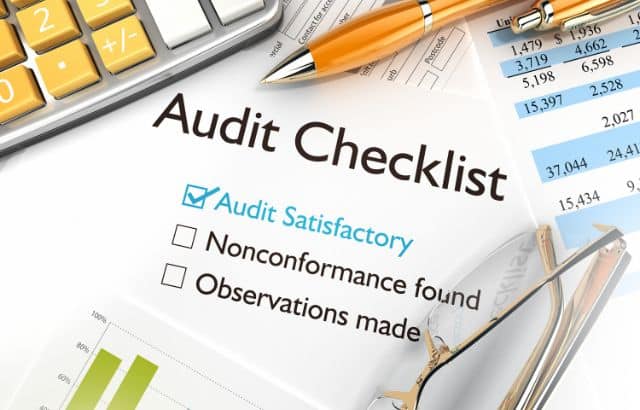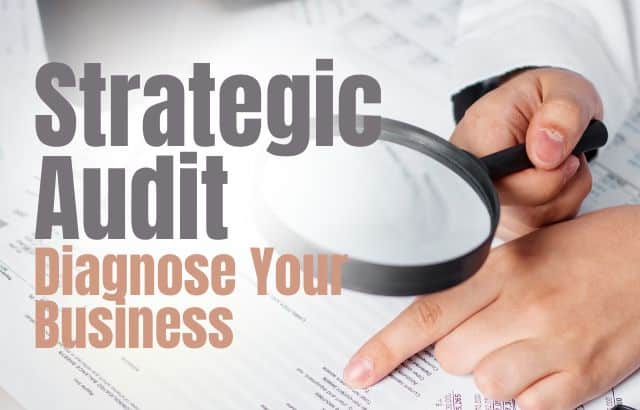Did you ever do a strategic audit to distinguish your business from competitors?
In today’s fast-paced business environment, companies must continually adapt, grow, and evolve to maintain their competitive edge. A strategic audit is a critical tool that enables businesses to systematically assess their strategies, performance, and alignment with long-term goals. Unlike a financial or operational audit, a strategic audit focuses on the overall direction of a company, evaluating whether it is on the right path to achieving its vision and mission.
This article will delve into the concept of a strategic audit, its importance, key components, and the steps to conducting one effectively.
Table of Contents
What is a Strategic Audit?

A strategic audit is a comprehensive evaluation of a company’s strategy, including its processes, objectives, and execution. It examines both internal and external factors, such as the company’s strengths, weaknesses, market position, and competitive landscape. The goal of a strategic audit is to determine whether the company’s current strategy is aligned with its business objectives, whether it remains relevant in the current market, and what improvements can be made.
In short, a strategic audit acts as a blueprint for assessing the overall health of a company’s strategy, ensuring that it is well-positioned for future growth and success.
Why is a Strategic Audit Important?

- Aligns Strategy with Business Goals
- A strategic audit ensures that your business strategy is aligned with the company’s mission, vision, and long-term objectives. It helps you identify whether the current strategic direction is effective and if it’s contributing to overall growth.
- Improves Resource Allocation
- The audit allows you to evaluate how well resources—such as time, talent, and capital—are being allocated. Are they being used efficiently and directed toward high-priority initiatives? The audit helps optimize resource utilization for maximum return.
- Identifies Risks and Opportunities
- Conducting a strategic audit helps uncover potential risks that could derail your strategy and identifies new opportunities for growth. By assessing market trends, competitor behavior, and internal weaknesses, businesses can anticipate and prepare for potential challenges.
- Provides Data-Driven Insights
- A strategic audit relies on comprehensive data analysis. This data-driven approach allows businesses to make informed decisions based on real insights rather than assumptions, ensuring that adjustments to the strategy are grounded in facts.
- Encourages Continuous Improvement
- Regular strategic audits foster a culture of continuous improvement. By evaluating performance on an ongoing basis, businesses can continually refine their strategies, adapt to changes, and ensure long-term success.
- Enhances Stakeholder Confidence
- Stakeholders—such as investors, employees, and partners—are more likely to have confidence in a company that regularly evaluates its strategic direction. A successful audit demonstrates that the leadership is proactive in assessing and managing the company’s long-term objectives.
Key Components of a Strategic Audit

A strategic audit typically includes several key areas of focus, each critical for ensuring that the business strategy is comprehensive, relevant, and effective.
1. Mission, Vision, and Objectives
- What to Audit: Evaluate the company’s mission and vision statements to ensure they reflect the business’s long-term aspirations. Review specific business objectives and how they align with the mission and vision.
- Why It’s Important: Clear, realistic, and inspiring mission and vision statements guide the company’s strategic direction and help unify stakeholders toward a common goal.
2. Internal Environment Analysis
- What to Audit: Conduct a SWOT analysis (Strengths, Weaknesses, Opportunities, and Threats) to assess the company’s internal environment. Focus on the company’s strengths, such as key resources and capabilities, and its weaknesses, like operational inefficiencies.
- Why It’s Important: Understanding the internal environment helps in identifying core competencies and areas for improvement, which are crucial for crafting effective strategies.
3. External Environment Analysis
- What to Audit: Perform a PESTLE analysis (Political, Economic, Social, Technological, Legal, and Environmental factors) to assess the external environment. Review market trends, industry dynamics, and competitor activity.
- Why It’s Important: External factors often present both risks and opportunities. Staying informed about the market landscape enables businesses to anticipate changes and adapt their strategies accordingly.
4. Competitive Positioning
- What to Audit: Analyze how the company compares to its competitors in terms of market share, pricing, product differentiation, and customer loyalty. Are you outperforming competitors or lagging behind?
- Why It’s Important: Understanding your competitive positioning helps you maintain or enhance your market leadership by adjusting strategies that improve differentiation and customer value.
5. Strategy Execution and Implementation
- What to Audit: Assess how well the company is executing its strategy. This includes evaluating the effectiveness of internal processes, leadership, communication, and organizational structure in achieving strategic objectives.
- Why It’s Important: A great strategy can fail without proper execution. Ensuring that all parts of the organization are working in harmony toward strategic goals is key to success.
6. Financial Performance
- What to Audit: Review financial data, such as profit margins, return on investment (ROI), and cash flow. Evaluate how well the financial performance aligns with strategic objectives.
- Why It’s Important: Strong financial performance is a direct indicator of strategic success. By auditing financial results, businesses can determine whether the current strategy is generating the desired outcomes.
7. Marketing and Customer Strategy
- What to Audit: Examine how well the company’s marketing strategies align with its overall objectives. Assess customer satisfaction, loyalty, and market penetration. Is the company targeting the right audience, and are customers responding positively to the brand?
- Why It’s Important: Customers are the cornerstone of business growth. Ensuring that the marketing strategy is effectively driving customer acquisition and retention is vital for long-term success.
8. Human Resources and Talent
- What to Audit: Evaluate the company’s talent management practices, including employee performance, leadership development, and organizational culture. Are the right people in the right roles, and is there alignment between human resources and strategy?
- Why It’s Important: Talent is one of the most important resources a company has. Effective talent management is crucial for executing strategic initiatives and fostering innovation.
Steps to Conduct a Strategic Audit

1. Define the Audit Scope and Objectives
- Before beginning the audit, clearly define the scope. Will the audit cover the entire business or specific departments? Establish key objectives for the audit, such as assessing competitive positioning or evaluating operational efficiency.
2. Collect Data
- Gather all relevant data, including internal performance metrics, financial reports, customer feedback, competitor analysis, and industry trends. The data should provide a comprehensive overview of the company’s strategic performance.
3. Analyze the Data
- Conduct a thorough analysis of both internal and external environments. Use tools such as SWOT, PESTLE, and competitive benchmarking to identify strengths, weaknesses, opportunities, and risks.
4. Evaluate Strategic Alignment
- Assess whether the company’s current strategies align with its long-term goals. Are the strategies driving progress toward the mission and vision? Identify areas of misalignment that may require adjustments.
5. Develop Actionable Recommendations
- Based on the audit findings, create a set of actionable recommendations. These should focus on improving strategic alignment, enhancing execution, addressing weaknesses, and capitalizing on new opportunities.
6. Implement Changes and Monitor Progress
- Put the audit’s recommendations into action and establish a monitoring system to track progress. Regular follow-ups and performance reviews ensure that the changes are delivering the desired results and that the company remains agile in adapting to new challenges.
Conclusion

A strategic audit is an indispensable tool for any business looking to refine its strategy, remain competitive, and drive long-term success. By systematically evaluating a company’s internal and external environments, its market position, and strategic execution, businesses can identify strengths to leverage, weaknesses to address, and opportunities to pursue.
Conducting regular strategic audits enables companies to stay agile in a constantly evolving market and ensures that they remain on the path to achieving their business goals. For companies committed to long-term growth and success, a strategic audit is not just an option—it’s a necessity.










